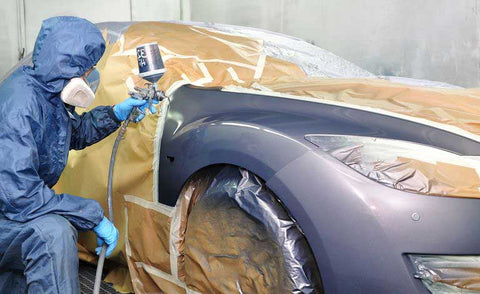Paint Thickness Deviations from Factory Standards can be a Strong Indicator of Hidden Damage
Posted by David Newton at

Understanding what the different layers are and the expected thickness of each layer is important to maintain a clear understanding of what you are looking for. Although these numbers will have some variation based on the make and model of each car, and even the year it was manufactured, knowing your car’s factory specifications and comparing them to the readings on your paint meter can let you know if what the dealer or private buyer is selling is accurate in its description. Doing your due diligence is just one of the important steps to protect yourself and keep from making a costly mistake.
Average car paint thickness in microns
In the United States, car paint thickness is generally expressed in millimeters. However, other parts of the world use microns as a unit of measurement instead. A conversion may be necessary in order to judge the information properly. The conversion rate is simple: 24.4 microns equals one millimeter. Thusly, the average new car’s factory paint job will be between 97.6 and 122 microns.
Car paint layers
Understanding the different layers in a car’s paint job is essential. These layers are metal, primer, base coat, clear coat and wax. The bottom layer is bare metal, and it will most likely be carbon steel or aluminum, depending on the choice of the manufacturer. The second layer is primer. Primer is the bonding agent that that allows the paint to stick to the metal. There are different types of primer and they come in several colors, but the most common color is gray. Primer must be applied to the metal first before the paint can be applied to the car in order for the paint to last. The primer must fully cover all exposed surfaces before the paint can be applied. This is what is called the base coat. This is the layer that gives that car it’s coloring and individuality. If the primer is administered properly it will provide a good surface for applying the paint. Once the painting has been completed, it’s time for the next layer, the clear coat. This layer is very important, because this is what gives the paint it’s shine. The clear coat protects the exposed layer of paint from the elements and without it the car would not have the glossy finish that is a trademark of cars today. It’s the difference between the paint looking dull and sparkling in the sun. The fifth layer is wax, and it is also very important. It protects the clear coat from the sun, wind and rain. This is the layer that allows water to bead up on the surface of the car. It’s an extra layer of protection and should not be forgotten or taken lightly.
What type of paint is on MY car?
It is important to determine the type of paint that is on your car before doing any type of repainting or repair job. Using the wrong type of paint can be a disaster, as certain types of paint just aren’t compatible and will cause a mismatch in color, or even worse, cause irreparable damage. Any local paint supply store should have that information readily available for you and can help you find the paint that should be a perfect match. There should also be a specific paint code listed on the vehicle’s ID tag. You can also find the exact original color and type of paint on the car’s VIN number, especially if it is an older vehicle. If the car has been repainted, this could be a bit trickier. Hopefully, there is a record of the paint code numbers used and you will have been given that information or be able to obtain it. If not, you will have to test a small area, preferably the area that needs to be repainted, to determine what type of paint was used. Usually, applying a small amount lacquer thinner will be able give you the answers you need. Buying a used car doesn’t have to be a scary proposition. With the proper tools, and a little knowledge, you can be confident that your decisions will be good ones. Knowing the difference between factory and secondary paint jobs is a step in the right direction.




